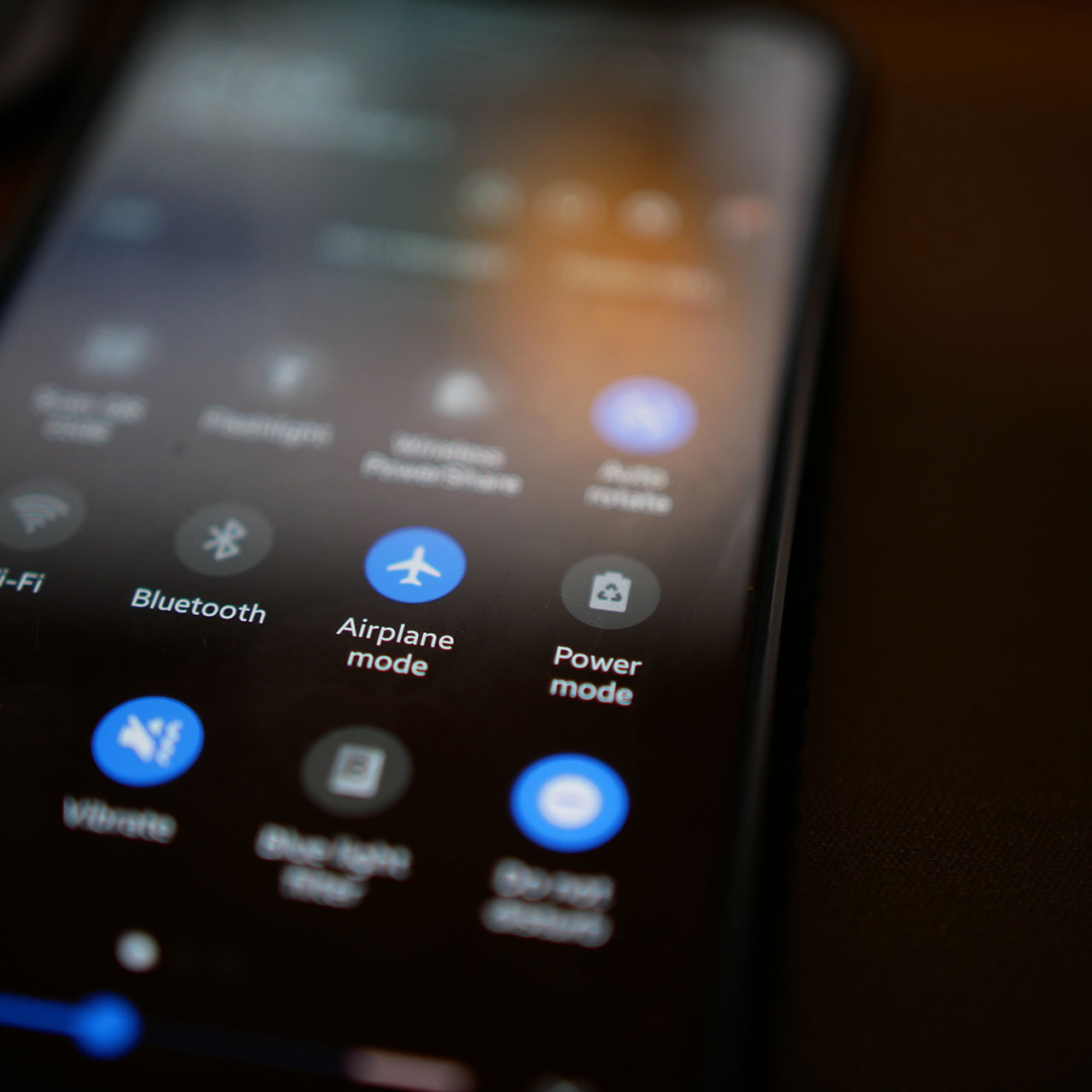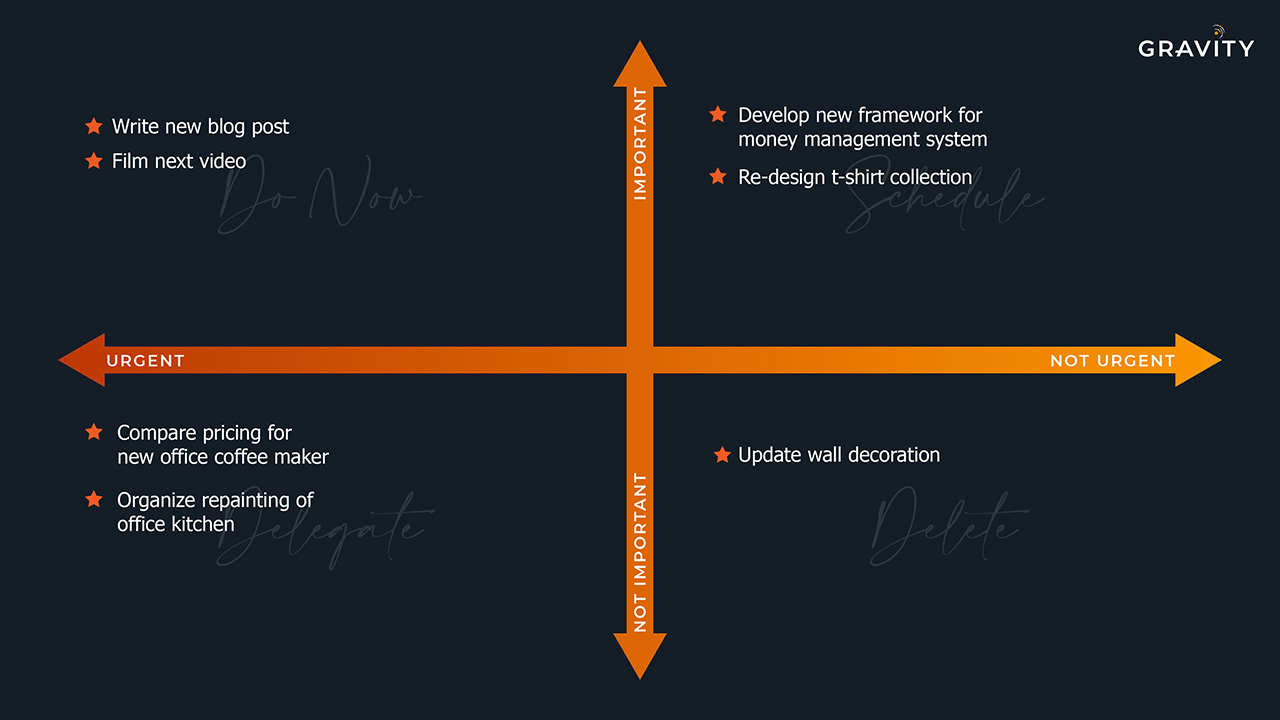
Key Points: This article will teach you some highly effective and actionable strategies that you can use today to stop procrastinating now.
If you want to gain control over your productivity, you’ll love these strategies.
So, let’s get started!
If you have read or watched the two previous episodes in this series, you have already learned a whole lot about procrastination. You know what procrastination is, why we procrastinate and how to minimize the things in your life that cause procrastination. If you haven’t read the articles or watched those videos yet, find out here which ones you have missed and come back once you’re up to date with those two episodes. But don’t forget to come back!
In the previous episode, we covered methods that target the triggers of procrastination. That means we are left with breaking the pattern and hacking the reward.
So, today let’s find out how you can break the pattern of your procrastination habit!
Bring Awareness Into the Equation to Beat Procrastination
Bringing awareness to the things we do can be a real game-changer for literally anything in our life. So, identifying and being aware of your triggers, especially stress, is one big step towards overcoming procrastination. But it might not always be possible to eliminate the triggers that stress us. That’s why you should be mindful of your procrastination patterns. Sometimes our thoughts and sometimes even our actions trigger our procrastination patterns. That means they cause us to avoid doing something.

For example, relationship problems that you can’t solve right now are a classic trigger. Thinking about that can hijack your focus from the task at hand. You can’t focus on the urgent things that require attention, but you try to distract your mind with something that makes it feel better.
So, for example, instead of working on a time-sensitive report, you write a lengthy email to a friendly client you like about some new products your company will offer next year or so. That’s an obvious scenario, and you can catch yourself when that happens by bringing awareness to your pattern.
In this situation, you obviously need some sort of emotional connection. So, what you could do in such a situation is to give a good friend a quick call. Keep that call short, really. Just tell them you don’t feel good and ask them if they have time for a talk after work. This way, you have created the emotional connection you need at that moment and know you’ll have someone to talk to later. That reduces your stress, and it should be easier to refocus on your urgent project.
But you might have formed procrastination patterns around other habits as well that you might not even be aware of. Let’s say you always get a cup of coffee sometime between when you start work and your lunch break. There is nothing to criticize about that. But then, once you have your coffee, you spend 10 minutes reading your work-related email newsletters. I intentionally didn’t write “social media feeds.” If you were browsing your social media, it would be evident that you are procrastinating. But 10 minutes of work-related newsletters? What’s so awful about that?
It might not seem dramatic, but what if you get another coffee before lunch, and maybe one or two cups in the afternoon as well? And what if you always spend 10 minutes reading newsletters when you get a cup of coffee? Those short 10 minutes very quickly add up to half an hour or even more throughout your workday. Multiply that by 5 workdays, and you are at a whopping 2.5 to 3.5 hours per week that might come back to haunt you.
And, if you are honest with yourself, probably 95% of the marketing emails you read are not relevant for your projects. At least, this is my personal experience. We only read them because they give us a break from our work routine. We all have such little time traps built into our days. The challenge is to discover them.
So, really bring awareness and mindfulness to your behaviour throughout your days. Start to notice when you procrastinate. Catch yourself. And, at this moment, acknowledge to yourself that you are stressed and take a few deep, slow breaths. Really, try it. When you change your breathing pattern, your mind and body kind of reset and snap you out of your current, let’s say, condition. Slow, deep breathing causes your body to reduce the stress chemicals in your bloodstream and helps you to refocus.

Be Kind to Yourself to Overcome Procrastination
Okay, so you’ve just caught yourself procrastinating. That might seem awful to you at that moment, but it’s actually good. You’ve made a step in the right direction by confronting yourself with that behaviour.
But now, don’t beat yourself up, but be kind to yourself. When you start to mentally punish yourself for procrastinating, you’re building up even more resistance and negative feelings and, ironically, that might lead to even more procrastination. So, the better way is to be forgiving to yourself and encourage yourself to overcome this habit of procrastinating.
Hack Your Procrastination Pattern with Commitment Devices
Another thing to do is to hack your behaviour with so-called commitment devices. That sounds like a fancy gadget or something, but that’s not what it is.
A commitment device is something you do now to prevent an undesired action in the future. This means that you should set up your environment in a way that makes it hard for you to procrastinate, or even better, impossible.

A famous example of how a commitment device works is Odysseus on his way to the sirens. He commanded to be tied to his ship’s mast. This way, he wouldn’t be tempted by the sirens’ songs to wreck his vessel on the rocky coast of their island.
When it comes to procrastination, commitment devices work differently for everybody because everybody procrastinates about different things and also does other things to procrastinate, but here are a few ideas:
-
Delete Unnecessary Apps
Delete all apps from your phone that cause you to mindlessly waste time.
-
Airplane Mode
Set your phone to airplane mode to avoid distractions.
-
Turn off Email Notifications
Set an auto-responder that informs your contacts that you received their message and that you will, of course, reply. But include that you only check your inbox in 2-hour intervals – and then really stick to those 2-hour intervals. Close your email client and only open it at the designated times to avoid unnecessary distractions.
-
Block Websites that Sidetrack You
Some browsers can do it natively, and for others, you can get plugins to do the job.
Commitment devices not only work for avoiding distractions in professional and academic areas, but they can also help you reach your personal goals. For example:
-
Don’t Buy Any Unhealthy Food at the Grocery Store
If you don’t have any at home, you won’t eat it. Like that, you can’t procrastinate about eating a healthy diet.
-
Automated Payments
Stop procrastinating about paying your bills by setting up automated payments in your bank account.
-
Automated Savings
Stop procrastinating about saving money every month by automatically transferring 10% of your income to a savings account right at the start of the month.
You get the picture. For more inspiration, check out our list with many more ideas for commitment devices here.
Break Your Procrastination Pattern with Visual Cues
Visual cues also play into adjusting your surroundings. But instead of keeping you from other things, like commitment devices, they are an effective way to increase your motivation to start and finish a task. Visual cues are fantastic because they can help you in various ways to overcome procrastination. You can use visual cues as a reminder to start a task, behaviour or habit. But they can also be used to display your progress. And that can help you to stay motivated.
A visual cue can be as simple as a post-it note on the side of your computer screen. Like this, you can remind yourself to stay away from social media or keep your email client closed if that’s one of your commitment devices.
You could also set a reminder on your phone for when you should start with a specific task. You can also add a motivational quote to your desktop wallpaper that helps you to get into the right mindset once you start your computer.
Visual cues that can help you track your progress can be very straightforward. An easy way to start is a to-do list on which you check off everything you have accomplished. This can really boost your motivation when you see more and more tasks marked as completed on your list.
Whether you do it on paper or use an app for it is probably a question of personal taste. I have tried both. Actually, I’ve probably tried about 30 different apps or so, and guess what? For me, a pen-and-paper approach in my bullet journal works better than any app out there. None of these apps really does the things I personally need to make them valuable for me.
Break Larger Tasks into Smaller Chunks
A large project can feel threatening, so the trick is to break it down into tasks and maybe those tasks into subtasks, and so on. Ideally, your individual chunks of work take no longer than 15-30 minutes to complete. For example, don’t list “putting together a presentation within 5 hours” as a task. Instead, split it into parts.
Give yourself 2 hours to research, 2 hours to work out the content and 1 hour for making it visually appealing.
Then, split your research time into 30 minutes for getting a basic overview of the topic, 30 minutes to find in-depth information, 30 minutes to create an outline and 30 minutes to map the info you find to the individual topics.
Then, move on to populating your presentation with content and divide the segments in the same way. Divide the allotted time by the number of sub-topics you need to present, and you get an approximate idea of how long you should work on each one. So, if you have to cover 4 topics, you have 30 minutes for each one, and so on.
Knowing you just have to work for the next 15-30 minutes on a small task will make it seem far less threatening, and starting will be much easier.
It works the same way with personal achievements such as losing weight. Instead of aiming to lose 30 pounds as soon as possible, break it down into achievable goals like losing 1 or 2 pounds per week.
And celebrating those many, smaller-paced successes will boost your motivation and keep you going.
Make Your Working Environment More Enjoyable
Well, maybe it’s time to buy a new desk to motivate yourself to enjoy your work more, or perhaps a thorough decluttering and cleaning session will already do the trick.
Polishing up your working environment can make your working experience a lot more pleasant and do a lot to reduce procrastination. Add a few green plants, get a daylight lamp to improve the atmosphere and maybe listen to some instrumental study music or to binaural beats that help you to focus.
And you really shouldn’t underestimate how important it is to have a desk and an office chair that fit your body geometry. If you can’t sit at your desk without being uncomfortable, that’s basically an invitation to procrastinate near the coffee maker or anywhere else.
Take Breaks Between Individual Tasks - Maybe!
People are very different about procrastinating, and not every strategy works for everybody. Taking breaks between individual 15-30 minute tasks is one that works for many people to be more motivated, but I’m not one of them.
Many people feel more motivated to start working on a task if they know they can take a 5-minute break after a 25-minute work sprint. This is called the Pomodoro Technique, by the way.
Knowing you can reward yourself with a break in just a few minutes can trick your present self into being more willing to endure a couple of minutes of something it doesn’t want to do. This can increase your productivity.
Then there are people like me. Sure, the idea of getting a coffee or reading an interesting article that doesn’t have anything to do with what I’m working on is tempting, no question.
But for me, such an interruption literally breaks my flow, and it takes me too long to get back into working mode. I have to bring up as much energy to get started as the first time that day. So, I prefer to just keep going until I’m done with my tasks for the day.
I do take a lunch break, though, and sometimes, you know you just have to go to the bathroom or get a new cup of coffee. But taking a deliberate 5-minute break to do something else like exercising briefly or sticking my head out of the window to get some fresh air really impairs my productivity. But hey, that’s just me.
Make the Consequences of Procrastination More Immediate
Our “present self” has a tendency to let the “future self” deal with the negative consequences of procrastination. If we procrastinate a bit now, we feel better in the moment. It’s our “future self” that will have to deal with making up for the time we wasted. To change that, you can put measures into place that make you feel the effects of procrastination immediately.
For example, you could get an accountability partner. Ask a friend to check in with you on your progress regularly. It could be daily or weekly, depending on what makes sense for your particular procrastination problem. Make an agreement to donate amount x to a charitable donation you absolutely wouldn’t support ever in case you procrastinate. Of course, this only works if you are honest with yourself and your accountability partner.
It is even more effective if you team up with your accountability partner right there and then instead of reporting to them later.
For example, commit to working out together. If you don’t show up, your friend will know for sure that you went back to procrastination mode.
The same thing works with maintaining a healthy diet if you live together with your partner. There aren’t a lot of opportunities to hide unhealthy food at home.
Remind Yourself of Your Vision and Your Purpose
One of the best ways and one that works for almost everybody to be more motivated and to beat procrastination is to remind yourself why you want to finish your task. Admittedly, this might be easier to do when it comes to personal goals than to projects you have to complete for the company you work for.
For example, you no longer want to put off saving money to pay off your debt because you might lose your house if you don’t. Now, that’s a pretty strong “why,” if you ask me.
But finding a strong “why” in your job is also possible if you identify yourself with what your company contributes to society. If your company finds solutions to provide clean water to more people, for example, then you also contribute to solving this problem. The positive impact your work has on others can be a very powerful WHY.
If you work for a company that does things that seem meaningless to you or even harmful to the planet, you might have difficulties finding your WHY besides your weekly or monthly paycheck. In this case, you might have to go back to eliminating your procrastination triggers, and if you come to realize that your current job causes you permanent stress and pain, you might need to think about finding a new, more fulfilling job.
Set Priorities
What if you have a very long list of goals and tasks? Well, the key here is prioritizing. You can’t do all of your 50 things at once, so pick the most important and most urgent ones with the highest impact. Find out which task brings you the greatest results for your goal and do this task first. There are several techniques out there that help you to prioritize. And sometimes, you can even combine them for an even better effect.
The best strategy to start with is the Eisenhower matrix. Here, you divide your tasks into four quadrants – “important and urgent,” “important but not urgent,” “urgent but not important,” and “not urgent and not important.” This is the first filter you should apply to your to-do list.
What you do then is you completely eliminate the tasks in your “not important not urgent quadrant.” There is no point in ever doing them, so you might as well just delete them. Then, try to delegate the tasks you have determined as “urgent but not important.”
Of course, this is not always possible if we don’t have anybody to hand them over to. If you live alone and don’t have the means to pay somebody to help you do your household chores, there is no way of delegating. But you could be less of a perfectionist about it.
At work, delegate such tasks to a co-worker or assistant, and if you don’t have one, go back to where we talked about this exact problem in the procrastination-triggers-article.
Important but not urgent tasks are something you shouldn’t worry about at the moment but instead schedule them for a later point in time. Periodically check how their status changes. If they become more urgent, move them into your important and urgent quadrant, but do it before you end up with too many things in this category.
Everything that sits in your “urgent and important” quadrant needs to be taken care of today or tomorrow at the latest.
Ideally, you don’t have more than 5 “important and urgent” tasks. If you do, you need to refine your focus even more. Single out the 5 most important tasks. Write them on your to-do list for today, and start with the most important one of those tasks. And: Don’t switch to working on another task until you have completed that one!

Download your free, easy to use Microsoft Word Eisenhower Matrix template now! Download the dark version (as shown in the image above, of course without the sample tasks) if you plan to use it only digitally on your screen. If you need a more printer-friendly version, download the light version with a white background. Happy planning!
Plan and Set Time Limits
Language is powerful and certain words can trigger certain emotions. A term that I really don’t like is “deadline.” It has such a negative connotation, and, I don’t know about you, but it makes me feel stressed. What I try to do is to replace it with the term “time limit.” I say “try” because modern work culture has implanted the term “deadline” so deeply into our consciousness that I sometimes still use it. And then feel stressed.
Anyways, some tasks, especially at work or college, will already come with fixed time limits. This, believe it or not, can actually be an advantage. We tend to procrastinate more on things that don’t have a time limit, and tragically, the more time we have to finish something, the longer it takes us to get there. And this even if the task itself can be completed quickly.
This means: Set artificial time limits for your tasks and don’t give yourself too much time to finish something.
For example, if you have to write a report and, from experience, you know that you need about 2 days to finish it, don’t assign more time to this task. If you give yourself 3 days to finish it, chances are you will spend 3 days on it instead of 2.
Work for 2 Minutes
This may sound like pointless advice, but actually, there is a point to it. Seriously. Sit down and do it – and you don’t have to aim for a whole block of 15-30 minutes. 2 minutes will already do. This is all you have to commit to.
Studies show that everything that takes less than 2 minutes is something that we have less resistance to do than anything that takes longer. And studies also show that once you start, the chances of keeping at it and finishing your task are actually very high. Starting is the hard part, not keeping at it.
There is an effective hack by James Clear. Decide what to work on, and set your priorities for the next day at the end of this workday. Or do it in the evening as far as personal goals are concerned. Like this, you are already kind of in the flow the following morning, and you can trick your brain into thinking you have already started.
And that's it? This is How You Break Your Procrastination Patterns?
Well, yes! But if you want to learn how to hack your reward system to break procrastination, come back to read our upcoming article and watch our next video on this topic. To make sure you don’t miss it, subscribe to our YouTube channel and hit that notification bell! We’d really appreciate it!
Until then, try out the techniques I explained in this article and let me know in the comments below our video which methods you have tried so far to beat procrastination and how they worked for you. Everybody is different, and not everything works for everyone.
Your Recommended Free Masterclass

Making Informed Buying Decisions and Only Buy What You Really Need
Reclaim your power and your decision! Get rid of the “consumer” label and reclaim your right to be a citizen. See behind advertisers’ tricks and learn to avoid consumer traps that cost you money you wouldn’t have needed to spend.
Meet Your Teacher



